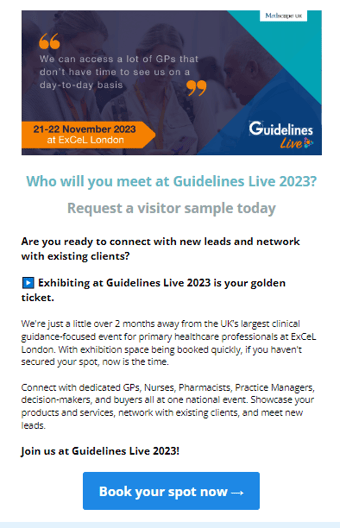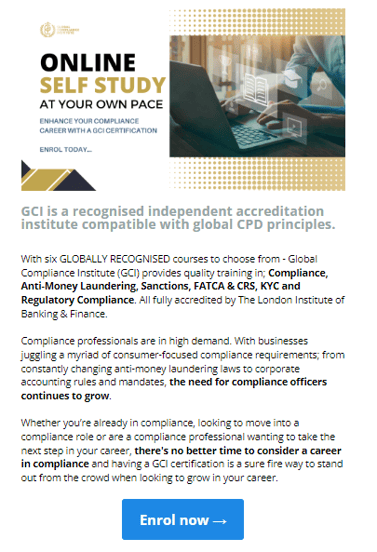Email marketing is a cost-effective way to deliver targeted messages, convert leads, and build a deeper relationship with your subscribers.
Email marketing is especially effective in the adult education sector where professionals and adult learners alike can receive updates on new course offerings and dates straight to their inboxes. With an email, training providers can share their most relevant courses with subscribers based on their industry or program of interest and watch the leads roll in!
With ten years of experience offering email marketing services, we've learned a thing or two about creating a great email. Our email marketing service for adult education providers now boasts an average open rate of 47.4% and a click-to-open rate (CTR) of up to 9% (compared to the education and training sector average of 23.42% and 2.9%, respectively).
Comparison of open rates between findcourses.co.uk and education and training industry average
We analysed our email campaigns since January 2023 to illuminate some email marketing best practices. By comparing the top ten highest and lowest performing emails, we can pinpoint what works and what should be avoided in your next email campaign. Read on to discover our email marketing best practices for adult education buyers in the UK.
-2.png?width=498&height=498&name=Untitled%20design%20(26)-2.png)
Target the right education buyers
The first step in any email campaign is to get to know your target audience: Identify their needs and wants and direct them to the most relevant content on your website.
Adult education buyers are usually over the age of 18 and are looking to acquire, update, complete or expand their knowledge and skills for professional or personal development. Through speaking with users on findcourses.co.uk, we’ve learned that adult education buyers most often look for local courses at fair prices that can be delivered conveniently and work with their busy schedules. Of course, virtual and online training courses are becoming increasingly popular.
Emails that are personalised and relevant to the recipient have higher open rates and lower unsubscription rates than those that are sent to entire member databases. Eight out of ten of our emails with high CTRs were sent to targeted audiences, while only two out of ten of our emails with the lowest CTRs were targeted.
Select a short and sweet subject line
-2.png)
The subject line of your email is your chance to make a great first impression and can make or break your open rates. Make sure to keep your subject line short so that it isn’t cut off when read on a mobile device. We recommend fewer than 60 characters.
Our emails with the highest open rates gave the reader a clear idea of what's in it for them. For example: “Multiply your in-person interactions with Primary Care HCPs” highlights a benefit, or “Discounted training courses from LRQA” suggests financial value. Other effective subject lines created urgency, such as "Act fast! Discounted Exhibitor Spaces Available ⏲" or intrigue, such as in the title, "The Burning Question...🔥"
Increase your CTR by asking a question in the subject and answering it in the body of the email. Emails with high performing CTORs might ask questions like, “Are your HR skills up-to-date?” or “The oil & gas industry is changing. Are you ready to change with it?”
Finally, your subject line should not make false promises. Offering a discount in the subject line and not following through in the email is a recipe for low CTRs and high unsubscribe rates. If you do offer discounts, avoid the use of exclamation marks and caps lock to prevent your emails from getting marked as spam.
When in doubt, many email marketing services allow you to A/B test subject lines so you can choose which one performs best before sending it to your entire recipient list.
Keep them reading with relevant content
A catchy subject line is your chance to make a great first impression, but how do you keep recipients interested? Personalisation!
Make sure the content of your email is relevant to your target audience. A newsletter with industry insights or an email featuring your upcoming courses in their industry are great ways to personalise your email.
Our analysis has shown that emails featuring a specific course or courses perform much better than emails with general information about the provider. One of our highest performing emails provides a quick statistic about new skills required in a particular industry, and then follows up with courses that help strengthen those skills.
Examples of our highest performing content
#1: Highlighting an upcoming industry-specific event:

#2. Highlighting Industry-specific certifications available:

#3. Highlighting Industry-specific courses:

Encourage clicks with calls to action
Once you’ve grabbed your reader’s attention with relevant content, encourage them to click by inserting strong CTAs. Most clicks occur “above the fold,” or before the reader needs to scroll down, so putting your most important CTAs front-and-center is key.
Bright, strong header images with clear overlay text almost always get clicks so create a design that will grab your reader’s attention. The first CTA button should then be placed right after a short text and tell your reader exactly where they will be redirected when they click.
Our analysis shows that most people click on course-specific CTAs over vague CTAs. For example, “view all legal courses” or “take this course” can perform better than “learn more” or “find out more.” We also noted very low clicks on any CTA promoting something free, like a free consultation or a free trial, which may seem like spam.
Finally, while it is important not to overload your email with CTAs and links, they shouldn’t be hard to find and should always accompany your text. At Findcourses, we adhere to a 1-link policy to keep our emails clear, direct, and out of the spam-folder!
Our best-performing emails feature about 70 words per CTA, while the lowest feature 100+ words per CTA.
Choose the best day to send your email
Once you’ve crafted a compelling subject line, created a personalised message with strong CTAs, reviewed your email for spelling mistakes and checked that all links work, it’s time to schedule your email! But when is the best time to hit send?
There are certain times and weekdays when emails are more likely to be opened. Generally, email marketing campaigns perform best on Tuesdays, followed by Thursday and then Wednesday at 10 AM. However, this can vary based on your unique customer set, but remember that Monday emails might get buried! We send emails on Tuesdays and Thursdays, and our booking schedule is often very busy, so don't forget to book a slot in advance with your Account Manager.
Ready to experience the power of email marketing?
Whether you’re new to email marketing or looking to improve your existing campaign, we hope our list of email marketing best practices will take your emails to the next level.
If you’d like to take advantage of our high open rates and CTRs that surpass the education and training industry average, we’re happy to help! Read more about our services to find out how we can help you achieve your goals.





.jpg)
-Oct-29-2025-11-53-41-3462-AM.jpg)

